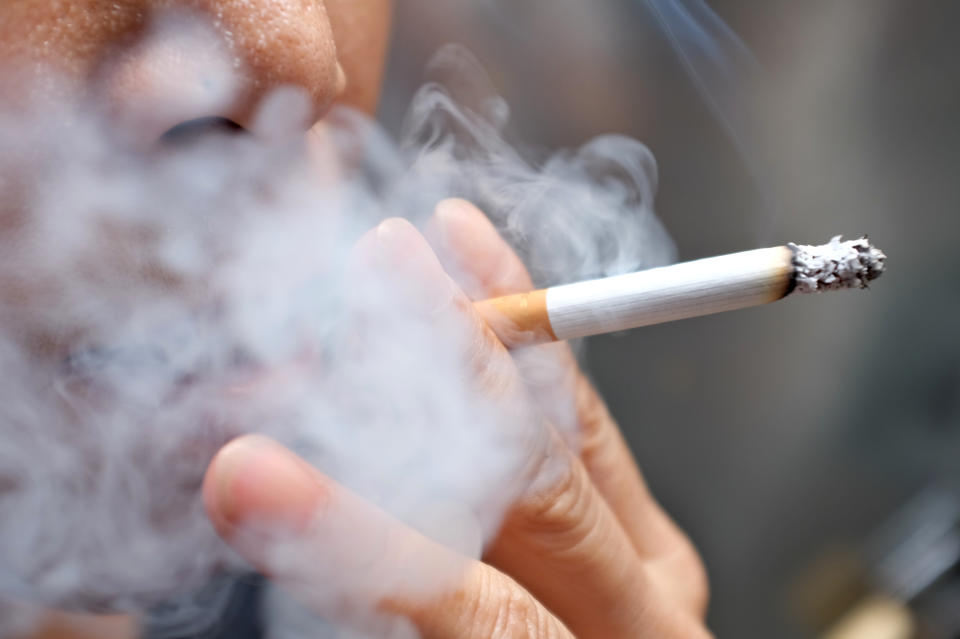Moviegoers may bring 'thirdhand smoke' into cinemas

Moviegoers may bring “thirdhand smoke” into cinemas, research suggests.
Secondhand smoke has repeatedly been proven as harmful, with just walking in the wake of a cigarette putting a pedestrian’s health at risk.
Read more: What is thirdhand smoke?
The lesser-known thirdhand smoke is thought to linger in everything from carpets to curtains after a smoker has “lit up”.
Animal studies suggest exposure could affect our weight, immune system and even blood.
Not everyone is convinced, however, with the NHS previously calling thirdhand smoke “plausible but unproven”.

To learn more, scientists from Yale University looked at the Cinestar Cinema Complex in Mainz, Germany.
They described the site as a “well-ventilated, well-maintained and modern movie theatre environment where occupants cannot actively smoke”.
Over four days, they noted 35 volatile organic compounds “associated with thirdhand smoke or tobacco smoke”.
Volatile organic compounds are “emitted as gases from certain solids or liquids”.
They include a “variety of chemicals”, like formaldehyde, which may have “short- and long-term adverse health effects”.
Read more: New mum asks smoker mother-in-law to shower before touching her baby
Results suggest these compounds “spiked” at the start of films “during audience arrival”, suggesting the seats were “disturbed”.
These emissions “exposed occupants to the equivalent of one-to-10 cigarettes of secondhand smoke”.
“We conclude humans transport thirdhand smoke into the theatre via their clothing and bodies”, the scientists wrote in the journal Science Advances.
They noted chemical concentrations were higher during late-night and “R-rated” films, “when attendance is lower but the proportion of adults is higher”.
R-rated films are unsuitable for children under 17.
The scientists worry thirdhand smoke exposure could be even worse in confined, poorly-ventilated spaces.
They plan to investigate whether “thirdhand vaping” is also a risk.
How could thirdhand smoke harm our health?
Thirdhand smoke is a relatively new area of research.
Scientists from Drexel University in Philadelphia were some of the first to look into whether nicotine residue really does linger.
After analysing an old classroom, they found a “reduced nitrogen component” in 29% of the airborne particles.
The team put this down to “thirdhand smoke components” from “interior surfaces”.
“In an empty classroom, where smoking has not been allowed in some time, we found 29% of the entire [air particles] contained thirdhand smoke”, said study author Dr Anita Avery.
In a second part of the experiment, the team filled a sealed container with cigarette smoke, which they then “flushed” with outdoor air.
The following day, they pumped filtered air into the container to mimic indoor ventilation.
Despite this, the container still had 13% more harmful substances than the “control boxes”.
The scientists worry humid, circulating air - like that in offices - may “lift” chemicals fixed to surfaces to become airborne.
While nicotine residue may linger all around us, whether it poses any health risks is less clear.
Read more: Thirdhand Smoke Damages Human Cells
To learn more, scientists from the Lawrence Berkeley National Laboratory in California exposed newborn mice to thirdhand smoke.
This caused the animals to weigh significantly less than unexposed controls.
Thirdhand smoke also “threw off” the mice’s blood make-up.
The newborns had significantly more of the immune-fighting proteins oesophils, suggesting their immune system had been activated.
Their platelets, which cause blood to clot when the skin is cut, also went down.
The scientists concluded “thirdhand smoke exposure may have adverse effects on human health”.
When it comes to humans, babies and toddlers could be worst affected.
Dr Jonathan Winickoff, from the Harvard Cancer Center, told Scientific American: “The developing brain is uniquely susceptible to extremely low levels of toxins.”
The paediatrician also warned a child’s height puts them closer to smoke residues in carpets or furniture.
“They tend to touch or even mouth the contaminated surfaces,” he said.
Scientists from Massachusetts General Hospital claim children ingest up to 0.25g (0.0005lb) of dust a day, more than twice that of adults.
The same team looked into whether the public believe thirdhand smoke exists.
They asked 1,478 people, 273 of which were smokers, if they thought smoke residues harm children.
Less than half (43%) of the smokers answered “yes”, compared to 65% of the non-smokers.



